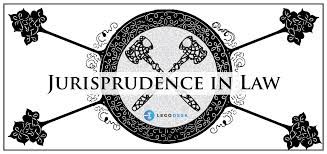Unveiling Manusmriti: A Critical Analysis Of Hindu Women's Rights And Constitutional Compatibility
The Smritis mark a distinct period in the evolution of Sanskrit literature. "The
Manusmriti is the most important and the earliest metrical work of Dharmasastra
textual tradition of Hinduism. It is a standard work on Hindu law. Indian
tradition unanimously regards Manu as the first progenitor of the human race and
also its first legislator. This Manu was believed to the founder of the social
and moral order of society. Tracing backwards from the Smritis to the Vedas we
found the consciousness of Manu's being the first law giver present in every
epoch of Sanskrit literature".
It was first translated into English in 1794 by Sir William Jones, an English linguist, Orientalist, and judge of the British Supreme Court of Judicature in Calcutta. It is commonly referred to in English as the laws of Manu, or religious discourse to Vedic sages, on way of living for various classes of society. The poem portrays itself as a speech delivered to a gathering of seers by the wise man Manu. All subsequent Dharmasastras that came after Manu adopted it as the norm. Although little is known about this famous author's life, it is likely that he belonged to a traditional Brahmin class in Northern India.
Manusmriti is one of the most significant sources of Modern Hindu law conveying civil and criminal provisions prevailing under Hindu Religio-legal system. It is otherwise known as Manusamhita or the 'laws of Manu' which contains 2690 verses divided into 12 chapters addressing various spiritual, religious and secular aspects of governance broadly ranging from state to personal affairs.
As regards the rights regime, it particularly deals with the notion of right and wrong, marriage, rules for women and wives, royal law, laws relating to succession, different aspects of judicial matters and forms of punishments. Women's rights as depicted within Manusmriti have been interpreted by various stakeholders of Hindu society from significantly differing approach. The peoples belonging to upper community i.e. the Brahmins and the followers of old school has long been considered the Manusmriti as the source of respect and honor for women under Hindu auspices.
On the other hand, a good number of rights advocacy groups, feminists and the peoples belonging to lower caste especially the Dalits consider this code as a culture that dominates the rights of women and denies the true spirit freedom and empowerment.
In this context, it is essential to initiate a comparative analysis between the rights regime established under the Manusmriti and the Human Rights normative framework for ensuring equality and elimination of gender discriminations from governance perspectives.
This article particularly focuses on the issues redressing the rights of women in contemporary Hindu society as envisaged under the Manusmriti. A rightful equilibrium is also required to be established between the traditional society's approach and the modernist approach towards Hindu women's rights governance in 21st century's contexts[1].
Through comparing and contrasting the status of women outlined under the Manusmriti along with modern Human Rights regime and theories of feminism, this discussion shall attempt to find out the possible ways of decimating the confusions with the help of other Vedic texts as well as the theory of Cultural Relativism.
Three objectives can best sum up the work of the sociology of religion: first, to increase knowledge of the place of religion in society; second, to examine its relevance in and implications for human history; and third, to comprehend the social determinants and influences that define religion. The social interaction of religious values and practices in different spheres and at different ages has led to significant setback on their particular interpretation. Indian social order is said to be built upon the pillars of the Manusmriti. As it has been noted, a social problem's connection to the law, in all of its varied elements, should be seen as an essential component of that situation's comprehension.
The portrayal of Hindu women within Manusmriti is considered to be based on the value of love, honor and dignity of women as an essential social element from both secular and religious contexts. As, the very opening of the Manusmriti states that where women are honoured, there the gods are pleased; but where they are not honoured, no sacred rite yields rewards.[2] In the preceding text it has been stated that the women must be honoured and loved by their male relations.
Now the contrast lies within the system which depicts, in another subsequent verse, women as having inherent attribute like impure desires, wrath, dishonesty, malice, and bad conduct.[3] In addition, Manusmriti has expressly debarred Hindu women and declared them incompetent to testify before the court of law as a witness[4].
Freedom of women as an ordinary human being has also been expressly denounced through saying that a woman is never fit for independence and she should always be kept under dependence by the male of their families[5]. Thus, it is evident that a woman must never seek to live independently.[6]
It has been ordained under the Manusmriti that women must always be confined in the house under trustworthy and obedient servants[7]. Moreover, these verses have been echoed in another chapter restricting women from doing anything independently, even if in her house. In regard to religious performances, it has been stated that for women no (sacramental) rite (is performed) with sacred texts, that is to say Hindu women are not allowed to recite the Hymns of Vedas in any religious rites as they are destitute in health and knowledge.
Contrary view has been taken in a subsequent verse stating that to be mothers were women created, and to be fathers' men; religious rites, therefore, are ordained in the Veda to be performed (by the husband) together with the wife. This view has also been reflected in another verse stating that no sacrifice, no vow, no fast must be performed by women apart (from their husbands). This provision has far reaching consequences as to the denunciation of individual identity of Hindu women in orthodox Hindu society. These oxymoronic provisions create a great deal of confusion regarding their practical implication as to the role of Hindu women in religious rites and practices in traditional social realities.
Moreover, in another verse it has been stated that where women are honoured, there the gods are pleased; but where they are not honoured, no sacred rite yields rewards. Hindu widow's right to remarriage has also been expressly denounced in another verse. It has been opined that Manusmriti is a complex commentary from women's rights perspective[8]. So, the portrayal of women and their general status within the precincts of Manusmriti is quite an arduous task which creates contradiction and lacks in coherence in certain respect. It is however to be noted that the effects of unhealthy religious practices are used to downplay the generally positive influence of religion[9].
We enjoy hearing wisecracking claims like India being the largest democracy in the world right now. Academically speaking, this may be true, but for India's lakhs of Sudras, Dalits, and Untouchables, there is little to celebrate in the world's largest democracy. It is evident that Dr. B.R. Ambedkar and other founding fathers of the Indian Constitution worked to ensure that the Preamble of the Indian Constitution pledges itself to the rights of the Indian Untouchables.
"To secure to all its citizens: Justice, social, economic and political; Liberty of thought, expression, belief, faith and worship; Equality of status and of opportunity; and to promote among them all; Fraternity assuring the dignity of the individual."
The Indian Constitution's Preamble, Fundamental Rights, Fundamental Duties, and Directive Principles all explicitly state the importance of gender equality. In addition to guaranteeing women's equality, the Constitution gives the State the authority to implement measures that positively discriminate in favour of women.
Our laws, development strategies, plans, and projects have all been created within the context of a democratic polity with the goal of advancing women in a variety of fields. In order to guarantee equal rights for women, India has ratified a number of international agreements and human rights instruments. The implementation of the Convention on the Elimination of All Forms of Discrimination Against Women (CEDAW) in 1993 is a significant one of them.
Among other things, fundamental rights guarantee everyone's equality before the law and equal protection under the law, forbid unequal treatment against any citizen based on their race, religion, caste, sex, or place of birth, and ensure that everyone has an equal chance to succeed in matters related to employment. The Constitution's Articles 14, 15, 15(3), 16, 39(a), 39(b), and 39(c) are particularly significant in this regard.
End-Notes:
It was first translated into English in 1794 by Sir William Jones, an English linguist, Orientalist, and judge of the British Supreme Court of Judicature in Calcutta. It is commonly referred to in English as the laws of Manu, or religious discourse to Vedic sages, on way of living for various classes of society. The poem portrays itself as a speech delivered to a gathering of seers by the wise man Manu. All subsequent Dharmasastras that came after Manu adopted it as the norm. Although little is known about this famous author's life, it is likely that he belonged to a traditional Brahmin class in Northern India.
Hindu Women's Rights in Manusmriti: A Socio-legal Perspective
The legal philosophy prevailing in ancient India was predominantly Hindu ruled and guided by the concept of Dharma. The concept of Dharma has repeatedly and significantly been depicted in various religious texts of Vedic period like Vedas, Vedangas, Upanishads, Puranas, and different Smritis. Among those Smriti texts, Manusmriti has been considered as the most authoritative statement, containing the very words of Brahma and having the most influential impact on the present Hindu society. Manusmriti or 'The remembered traditions of Manu' is the basis of what has been termed as Manav Dharma Shastra or the principal guiding book for the religion of human beings.Manusmriti is one of the most significant sources of Modern Hindu law conveying civil and criminal provisions prevailing under Hindu Religio-legal system. It is otherwise known as Manusamhita or the 'laws of Manu' which contains 2690 verses divided into 12 chapters addressing various spiritual, religious and secular aspects of governance broadly ranging from state to personal affairs.
As regards the rights regime, it particularly deals with the notion of right and wrong, marriage, rules for women and wives, royal law, laws relating to succession, different aspects of judicial matters and forms of punishments. Women's rights as depicted within Manusmriti have been interpreted by various stakeholders of Hindu society from significantly differing approach. The peoples belonging to upper community i.e. the Brahmins and the followers of old school has long been considered the Manusmriti as the source of respect and honor for women under Hindu auspices.
On the other hand, a good number of rights advocacy groups, feminists and the peoples belonging to lower caste especially the Dalits consider this code as a culture that dominates the rights of women and denies the true spirit freedom and empowerment.
In this context, it is essential to initiate a comparative analysis between the rights regime established under the Manusmriti and the Human Rights normative framework for ensuring equality and elimination of gender discriminations from governance perspectives.
This article particularly focuses on the issues redressing the rights of women in contemporary Hindu society as envisaged under the Manusmriti. A rightful equilibrium is also required to be established between the traditional society's approach and the modernist approach towards Hindu women's rights governance in 21st century's contexts[1].
Through comparing and contrasting the status of women outlined under the Manusmriti along with modern Human Rights regime and theories of feminism, this discussion shall attempt to find out the possible ways of decimating the confusions with the help of other Vedic texts as well as the theory of Cultural Relativism.
Women in Manusmriti: Sociological Approach of Religion in Context
Religion lives and reign within the premises of social structure with a holistic approach to discipline every element through strict mechanism of control and regulation. This is why it is essential to keep in track with sociological perspectives for analysing any given religious community's norms and practices. The study of religious beliefs, practises, and organisational structures through sociological methodologies and tools is known as sociology of religion.Three objectives can best sum up the work of the sociology of religion: first, to increase knowledge of the place of religion in society; second, to examine its relevance in and implications for human history; and third, to comprehend the social determinants and influences that define religion. The social interaction of religious values and practices in different spheres and at different ages has led to significant setback on their particular interpretation. Indian social order is said to be built upon the pillars of the Manusmriti. As it has been noted, a social problem's connection to the law, in all of its varied elements, should be seen as an essential component of that situation's comprehension.
The portrayal of Hindu women within Manusmriti is considered to be based on the value of love, honor and dignity of women as an essential social element from both secular and religious contexts. As, the very opening of the Manusmriti states that where women are honoured, there the gods are pleased; but where they are not honoured, no sacred rite yields rewards.[2] In the preceding text it has been stated that the women must be honoured and loved by their male relations.
Now the contrast lies within the system which depicts, in another subsequent verse, women as having inherent attribute like impure desires, wrath, dishonesty, malice, and bad conduct.[3] In addition, Manusmriti has expressly debarred Hindu women and declared them incompetent to testify before the court of law as a witness[4].
Freedom of women as an ordinary human being has also been expressly denounced through saying that a woman is never fit for independence and she should always be kept under dependence by the male of their families[5]. Thus, it is evident that a woman must never seek to live independently.[6]
It has been ordained under the Manusmriti that women must always be confined in the house under trustworthy and obedient servants[7]. Moreover, these verses have been echoed in another chapter restricting women from doing anything independently, even if in her house. In regard to religious performances, it has been stated that for women no (sacramental) rite (is performed) with sacred texts, that is to say Hindu women are not allowed to recite the Hymns of Vedas in any religious rites as they are destitute in health and knowledge.
Contrary view has been taken in a subsequent verse stating that to be mothers were women created, and to be fathers' men; religious rites, therefore, are ordained in the Veda to be performed (by the husband) together with the wife. This view has also been reflected in another verse stating that no sacrifice, no vow, no fast must be performed by women apart (from their husbands). This provision has far reaching consequences as to the denunciation of individual identity of Hindu women in orthodox Hindu society. These oxymoronic provisions create a great deal of confusion regarding their practical implication as to the role of Hindu women in religious rites and practices in traditional social realities.
Moreover, in another verse it has been stated that where women are honoured, there the gods are pleased; but where they are not honoured, no sacred rite yields rewards. Hindu widow's right to remarriage has also been expressly denounced in another verse. It has been opined that Manusmriti is a complex commentary from women's rights perspective[8]. So, the portrayal of women and their general status within the precincts of Manusmriti is quite an arduous task which creates contradiction and lacks in coherence in certain respect. It is however to be noted that the effects of unhealthy religious practices are used to downplay the generally positive influence of religion[9].
Compatibility With The Indian Constitution
Manusmriti, in the opinion of Dr. BR Ambedkar, is the biggest offence to justice, equality, and humanity. It should never be forgotten that a determined effort is being made to undermine the democratic, humanistic, and tolerant aspects of Indian culture through the popularisation of "holy" scriptures like Manusmriti.We enjoy hearing wisecracking claims like India being the largest democracy in the world right now. Academically speaking, this may be true, but for India's lakhs of Sudras, Dalits, and Untouchables, there is little to celebrate in the world's largest democracy. It is evident that Dr. B.R. Ambedkar and other founding fathers of the Indian Constitution worked to ensure that the Preamble of the Indian Constitution pledges itself to the rights of the Indian Untouchables.
"To secure to all its citizens: Justice, social, economic and political; Liberty of thought, expression, belief, faith and worship; Equality of status and of opportunity; and to promote among them all; Fraternity assuring the dignity of the individual."
The Indian Constitution's Preamble, Fundamental Rights, Fundamental Duties, and Directive Principles all explicitly state the importance of gender equality. In addition to guaranteeing women's equality, the Constitution gives the State the authority to implement measures that positively discriminate in favour of women.
Our laws, development strategies, plans, and projects have all been created within the context of a democratic polity with the goal of advancing women in a variety of fields. In order to guarantee equal rights for women, India has ratified a number of international agreements and human rights instruments. The implementation of the Convention on the Elimination of All Forms of Discrimination Against Women (CEDAW) in 1993 is a significant one of them.
Constitutional Provisions relating status of women in India
The Indian Constitution not only guarantees women's equality but also gives the State the authority to take positive discriminatory measures in their favour in order to counteract the accumulated socioeconomic, educational, and political disadvantages that women suffer.Among other things, fundamental rights guarantee everyone's equality before the law and equal protection under the law, forbid unequal treatment against any citizen based on their race, religion, caste, sex, or place of birth, and ensure that everyone has an equal chance to succeed in matters related to employment. The Constitution's Articles 14, 15, 15(3), 16, 39(a), 39(b), and 39(c) are particularly significant in this regard.
End-Notes:
- "The Sociological Study of Religion"
- 3:56, The Manusmriti (Translated by George Buhler, retrieved from The Laws of Manu: with Extracts from Seven Commentaries, The Clarendon Press, 1886)
- 9:17, ibid.
- 8:77, ibid.
- 9:2, 9:3, ibid
- Patrick Olivelle, Manu's Code of Law: A Critical Edition and Translation of the Manava Dharmasastra, (Oxford University Press, 2004), 146.
- 9:12, the Manusmriti
- Flavia Agnes, Law and Gender Inequality: The Politics of Women's Rights in India, (Oxford University Press, Delhi, 1999), 41-45.
- Thomas Skill, James D. Robinson, John S. Lyons and David Larson, "The portrayal of Religion and Spirituality on Fictional Network Television", Review of Religious Research, Vol. 35, No. 03 (March 1994), 251-267.
Law Article in India
Legal Question & Answers
Lawyers in India - Search By City
LawArticles
How To File For Mutual Divorce In Delhi

How To File For Mutual Divorce In Delhi Mutual Consent Divorce is the Simplest Way to Obtain a D...
Increased Age For Girls Marriage

It is hoped that the Prohibition of Child Marriage (Amendment) Bill, 2021, which intends to inc...
Facade of Social Media

One may very easily get absorbed in the lives of others as one scrolls through a Facebook news ...
Section 482 CrPc - Quashing Of FIR: Guid...

The Inherent power under Section 482 in The Code Of Criminal Procedure, 1973 (37th Chapter of t...
The Uniform Civil Code (UCC) in India: A...

The Uniform Civil Code (UCC) is a concept that proposes the unification of personal laws across...
Role Of Artificial Intelligence In Legal...

Artificial intelligence (AI) is revolutionizing various sectors of the economy, and the legal i...








Please Drop Your Comments